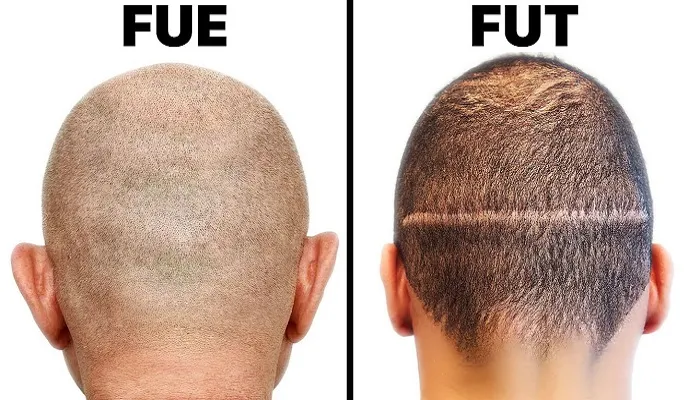Hair transplants have revolutionized the treatment of hair loss, offering effective solutions for people suffering from androgenetic alopecia or pattern baldness. Among the most common techniques are Follicular Unit Extraction (FUE) and Follicular Unit Transplantation (FUT). While both procedures aim to restore natural-looking hair, they differ significantly in method, recovery, cost, and outcomes. This article explores both techniques in detail to help you decide which is better suited for your individual needs.
What Is FUE (Follicular Unit Extraction)?
FUE is a modern hair transplant technique that involves extracting individual follicular units directly from the donor area, usually the back of the scalp. These units are then transplanted to the areas with hair loss. This method is minimally invasive and leaves tiny circular scars that are barely visible.
What Is FUT (Follicular Unit Transplantation)?
FUT, also known as the strip method, involves removing a strip of scalp from the donor area. The strip is then dissected into individual follicular units under a microscope before being transplanted to the recipient area. FUT typically leaves a linear scar but may allow for more grafts in one session.
Comparison: FUE vs FUT
1. Procedure Technique
FUE uses a punch tool to extract grafts one at a time. It’s more time-consuming but does not require stitches. FUT involves surgically removing a strip of scalp, requiring stitches and a longer healing period in the donor area.
2. Scarring
FUE results in numerous tiny dot scars that are often unnoticeable. FUT, on the other hand, leaves a linear scar that may be visible if the patient prefers very short hairstyles.
3. Recovery Time
FUE offers a quicker recovery. Most patients resume normal activities within a few days. FUT requires a longer healing period due to the strip incision and sutures. For detailed insight into post-operative healing, refer to Hair Transplant Recovery Time.
4. Pain and Discomfort
Patients typically report less discomfort after FUE. FUT may involve more post-operative pain due to the stitches and the nature of the surgical removal.
5. Graft Quality and Survival
Both methods can yield high-quality grafts. However, FUT grafts might be slightly more robust due to less transection during extraction. The skill of the surgeon greatly influences the final result in either case.
6. Number of Grafts per Session
FUT often allows for more grafts to be transplanted in a single session, making it suitable for patients with extensive hair loss. FUE might require multiple sessions to achieve similar density.
7. Cost
FUE is usually more expensive due to its labor-intensive nature. FUT is typically more affordable, especially for patients needing a large number of grafts.
8. Hair Transplant Risks
Regardless of the method, hair transplants carry potential complications such as infection, bleeding, poor growth, and unnatural results if done improperly. It’s essential to understand all Hair Transplant Risks before undergoing surgery.
Advantages of FUE
Minimally invasive with no linear scar
Faster recovery time
Suitable for patients who wear short hairstyles
Less postoperative discomfort
Disadvantages of FUE
More expensive
Time-consuming
Limited number of grafts per session
Advantages of FUT
Allows for a higher number of grafts
Often more cost-effective
May yield more robust grafts
Disadvantages of FUT
Leaves a linear scar
Longer recovery time
More postoperative discomfort
Which One Should You Choose?
The decision between FUE and FUT should be made in consultation with a qualified surgeon. Consider your hair loss severity, budget, desired hairstyle, and personal preferences. FUE may be better for patients seeking minimal scarring and quicker recovery, while FUT might be ideal for those needing more grafts in a single session and are comfortable with a linear scar.
Key Factors to Discuss With Your Surgeon
Your hair type and density
Your goals and expectations
Availability of donor hair
Your overall health and medical history
Future of Hair Restoration
Technology is advancing, and newer techniques such as robotic-assisted FUE, stem cell hair transplants, and bio-enhanced methods are emerging. These could offer better results, faster recovery, and reduced risks in the near future.
Conclusion
FUE and FUT are both proven methods for hair restoration. The right choice depends on your specific needs, preferences, and medical guidance. Understanding the differences and aligning them with your goals can lead to a successful outcome. Whether you prioritize scarring, cost, recovery, or graft count, it’s crucial to stay informed and consult with certified professionals. For more information about Hair Transplant Recovery Time and Hair Transplant Risks, visit trusted medical resources before making a decision.
Related Topics:
- Pros & Cons of FUE Hair Transplant
- 4 Methods To Hide My Head After Hair Transplant
- 4 Effects of Hair Transplantation on the Skin System


